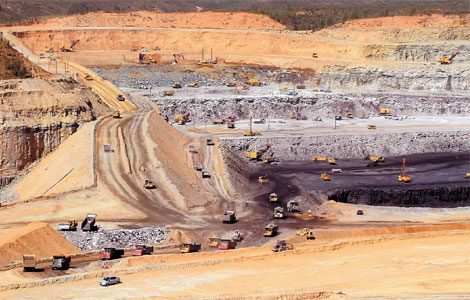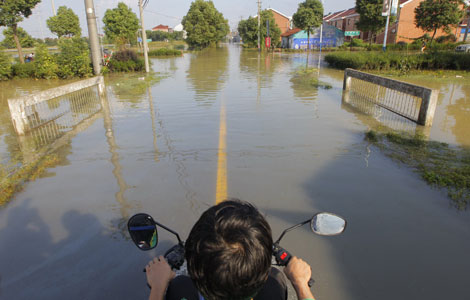Step backward for low-carbon strategy
Updated: 2013-11-07 07:25
By William Hua Wen, Tianyi Luo and Tien Shiao (China Daily USA)
|
||||||||
Record smog in October shut down Harbin, a city of 11 million people in Northeast China. Officials blamed the poor air quality on increased coal consumption during the first days of winter heating, underscoring the urgency of implementing the State Council's recently announced action plan to address air pollution.
But while the Air Pollution Control Action Plan has ambitious goals to cut air particulates and coal consumption it may put additional pressure on the country's water supply.
The plan aims to reduce particulate matter in the North China Plain by 25 percent and reduce coal's share in the national energy mix to 65 percent by 2017. One of the plan's key recommendations is to replace coal with cleaner natural gas, including synthetic natural gas converted from coal.
However, converting coal to natural gas is an extremely water-intensive process. The plants require water for cooling, production, and the post-production removal of contaminants. One cubic meter of synthetic natural gas requires 6 to 10 liters of freshwater to produce. So in an attempt to control urban air pollution in the East, China might jeopardize its water supplies elsewhere.
As of September, the Chinese government had approved 18 large-scale synthetic natural gas plants with a total capacity of 75.1 billion cubic meters per year; most of them located in arid and semi-arid regions in the Xinjiang Uygur and Inner Mongolia autonomous regions. Operating at full capacity they will consume a total of 500 to 700 million cubic meters of freshwater a year. That's almost 20 percent of the region's total industrial water use in 2011. The plants will therefore significantly exacerbate stress in areas already experiencing chronic water shortages.
Eleven of the approved plants, eight from the Xinjiang Uygur autonomous region and three from the Inner Mongolia autonomous region, are located in catchments that do not have major reservoirs. Each of the plants will have to compete with many other users for the limited available water supplies. They also face medium-to-high or high risk from seasonal variability. So, in the dry season the plants may have to reduce production capacity or experience temporary outages due to the lack of resilience in the water supply.
Synthetic natural gas development around the city of Ordos in the Inner Mongolia autonomous region illustrates how these water-intensive plants can disrupt regional water security. Ordos' five approved synthetic natural gas plants will need approximately 140 million cubic meters of freshwater annually, which is around 10 percent of Ordos' total water supply, or 40 percent of the region's industrial water use as of 2011.
Once the plants are operating they will further disrupt water supplies for farmers, herders, as well as other industries.
While synthetic natural gas emits fewer particulates into the air than burning coal, it releases significantly more greenhouse gases than mainstream fossil fuels. Peer-reviewed studies in the journal Energy Policy estimate that life-cycle CO2 emissions are 36 to 108 percent higher than coal when coal-based synthetic natural gas is used for cooking, heating, and power generation. Rapidly deploying synthetic natural gas projects might, therefore, be a step backward for China's low-carbon energy strategy.
China's government will need to think carefully about whether the benefits to the air of synthetic natural gas outweigh its water and climate change costs. Additionally, since water risks will likely disrupt synthetic natural gas production and synthetic natural gas plants will further strain already stressed water resources. The national government must engage with the Ministry of Water Resources and the Ministry of Environmental Protection. Meanwhile, the water authority should consider tightening the caps on industrial water use and introducing stricter local environmental standards in areas where water sources are at risk..
To ensure a sustainable future, it's important for China to prioritize energy projects that promise few environmental risks, especially to water supplies. Only then will China more successfully manage its conflict between economic growth and the demand for resources and find lasting energy security.
The authors are experts with the World Resources Institute.
(China Daily USA 11/07/2013 page12)
Most Viewed
Editor's Picks

|

|

|

|

|

|
Today's Top News
World to see boom in big firms
U. Michigan gets grant for China center
Lead author of Obamacare law blames govt for rollout
China's increasing role in global nuclear power
US companies in China feel squeeze
Panda cub drawing votes for her name
US, China team up for wildlife
E China still top draw for foreigners
US Weekly

|

|















